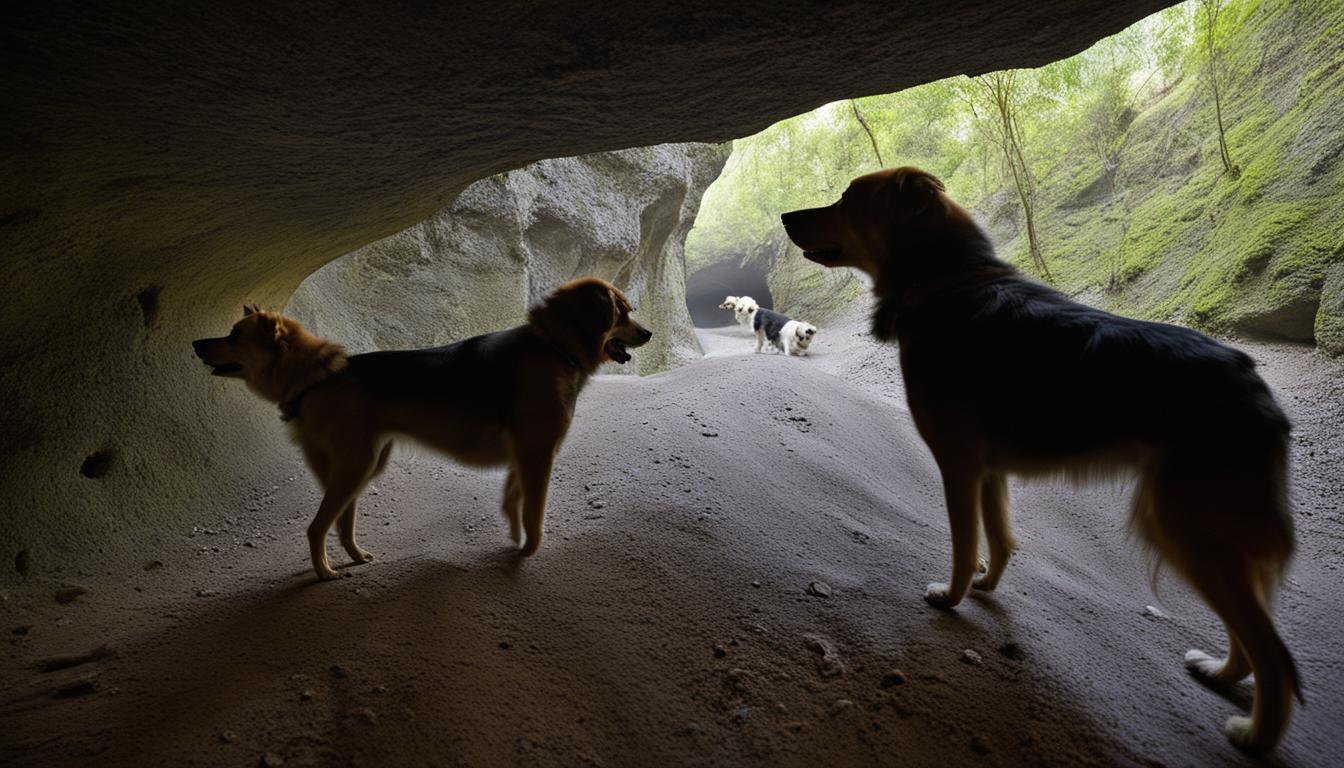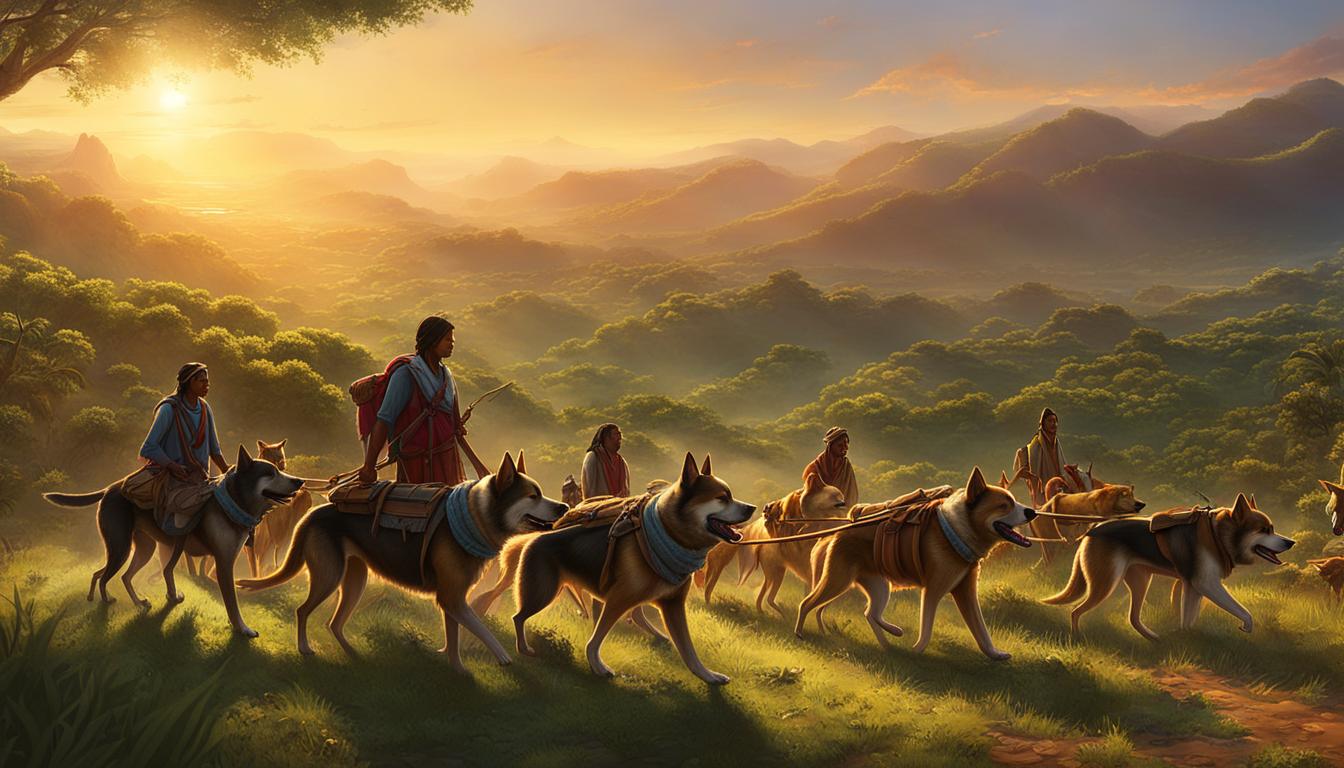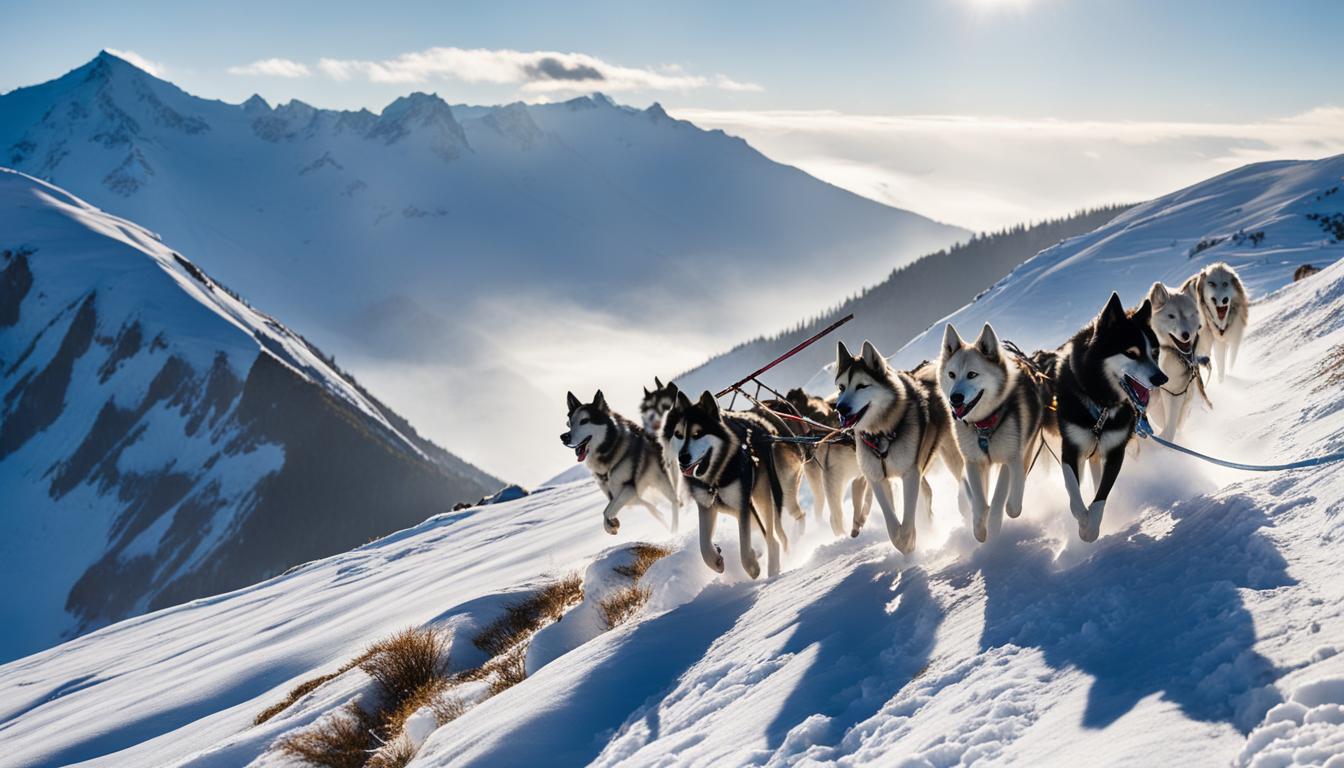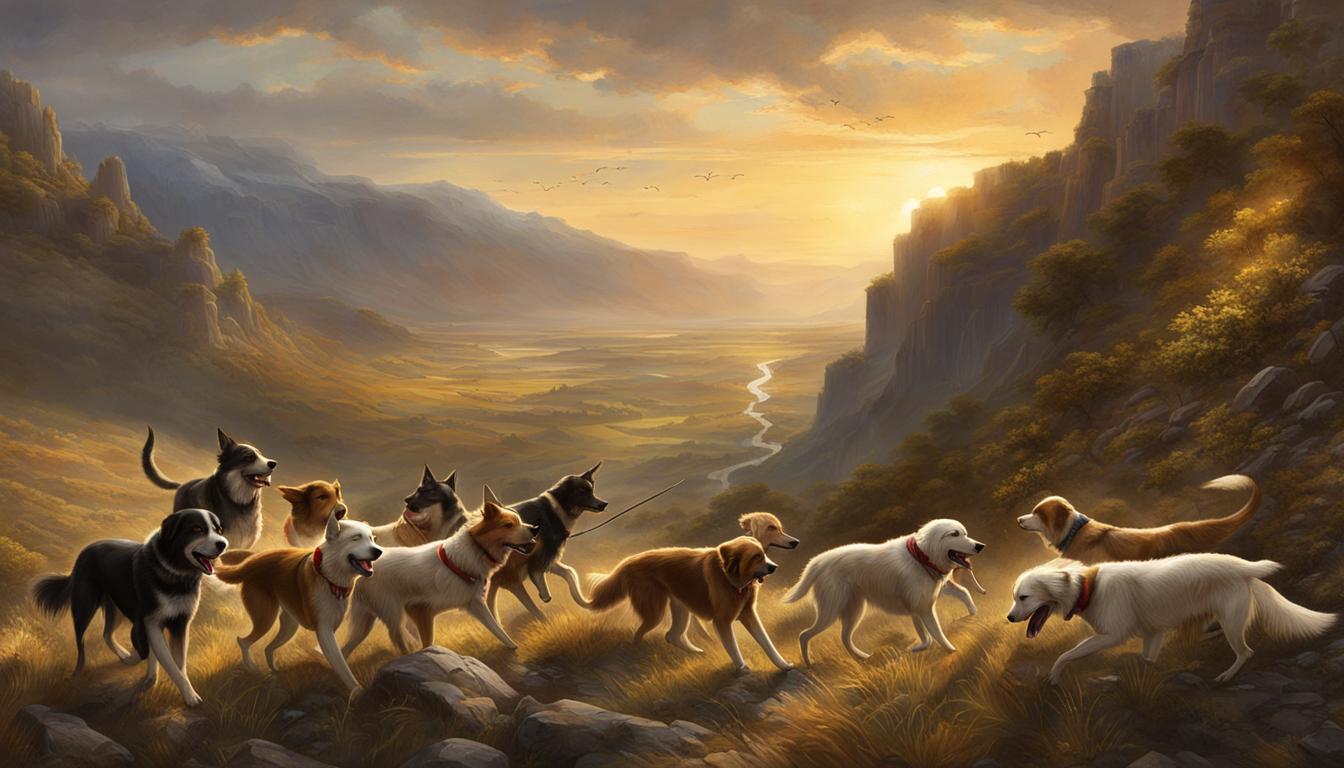They say a dog is a man’s best friend, but did you know that canines have played a crucial role in the journeys and expeditions of Asian explorers throughout history? These loyal and intelligent creatures have guided, protected, and aided travelers as they ventured into uncharted territories. Join us as we delve into the fascinating legacy of dogs in historic Asian journeys, exploring how they have been instrumental in shaping the continent’s exploration narrative.
Key Takeaways:
- Canines have had a long-standing presence in Asian exploration, serving as guides, companions, and protectors.
- Dogs played an integral role in ancient Asian civilizations, contributing to hunting, herding, and guarding.
- Even in modern times, dogs continue to be part of contemporary Asian expeditions, aiding in environmental detection and search-and-rescue missions.
- The legacy of these remarkable canines should be cherished and preserved to inspire future generations of explorers.
- The bond between humans and dogs is a testament to their extraordinary journeys together.
The Historical Role of Canines in Asian Exploration
Dogs have been significant companions in Asian exploration throughout history. These loyal canines have accompanied explorers on their voyages, expeditions, and journeys across the vast continent. They have proven indispensable in navigating challenging terrains, locating essential resources such as food and water, and providing protection against wild animals. In traditional Asian travels, dogs have held a special place, serving not only as working partners but also as cherished members of exploration teams.
From the ancient Silk Road to the maritime voyages of the legendary Zheng He, dogs have played an integral role in Asian exploration. These intelligent and adaptable animals have been trusted guides and companions, ensuring the success of many expeditions. Their keen senses and abilities to withstand harsh conditions have made them reliable allies for explorers venturing into unknown territories.
The historical Asian explorations with dogs have left a lasting legacy. These canines exemplify the bond between humans and animals, demonstrating the mutual trust and dependence necessary for successful exploration. Their contributions to Eastern exploration should be recognized and celebrated, as they have played a vital role in shaping the history and discoveries of the Asian continent.
| Exploration Expedition | Dog Breeds | Role |
|---|---|---|
| Silk Road | Tibetan Mastiffs | Protection against bandits and wildlife |
| Maritime Voyages of Zheng He | Malay and Chinese Crested Dogs | Guarding the ships and detecting dangers |
| Mountaineering Expeditions | Siberian Huskies | Navigating treacherous mountainous terrains |
“Dogs are not just our companions; they are our trusted allies in the world of exploration, guiding us through the unknown and ensuring our safety,” says renowned explorer Dr. Mei Ling. Dogs in traditional Asian travels have been revered as loyal partners, offering support, companionship, and a sense of comfort to the intrepid explorers who dared to venture into uncharted territories.
Canine Companions in Ancient Asian Civilizations
Dogs played a significant role in ancient Asian civilizations, contributing to the region’s discovery and exploration. These loyal and versatile creatures were adept at navigating the challenging terrains of Asia, providing invaluable support to early explorers. Whether it was hunting, herding, or guarding, dogs were a vital part of ancient Asian societies.
In ancient China, dogs held symbolic significance and were considered to bring good luck and protection. They were even buried alongside their owners, emphasizing their valued status. Similarly, in Japan, Akita Inu dogs were revered as sacred animals, believed to bring prosperity to their owners. The deep bond between humans and dogs in these ancient civilizations extended beyond practical purposes, highlighting the emotional connection and mutual respect shared between the two species.
Ancient Asian explorers heavily relied on the companionship and support provided by dogs during their expeditions. These courageous canines ventured into unknown territories, assisting explorers in finding their way and ensuring their safety. Dogs navigated treacherous terrains, such as dense forests and rugged mountains, with remarkable agility and competence. Their acute senses and instincts helped detect potential dangers, making them valuable allies in the quest for new discoveries.
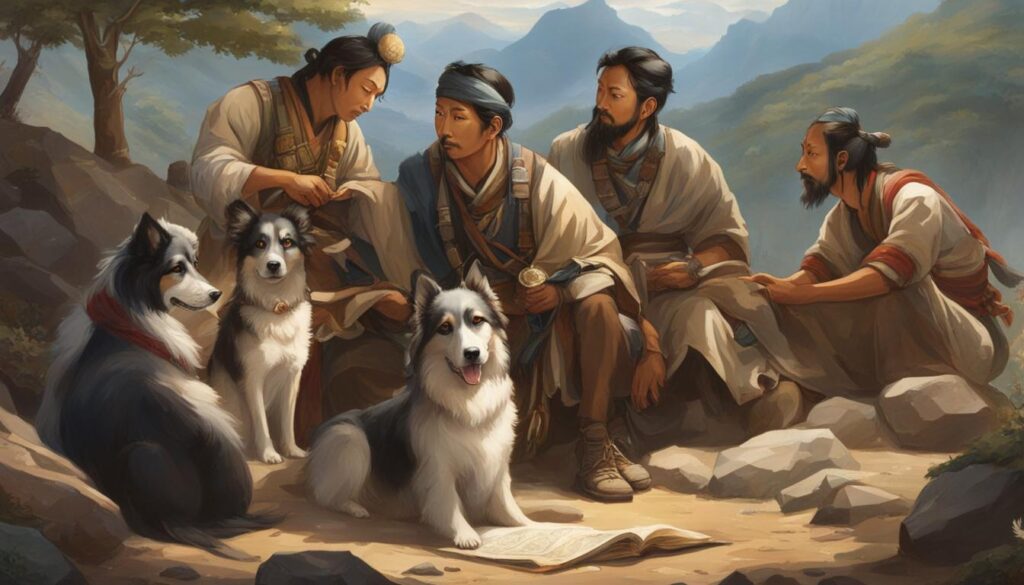
The contributions made by dogs in ancient Asian civilizations cannot be understated. They played an integral role in the success and survival of explorers, providing not only practical assistance but also emotional support and companionship. The stories of these remarkable canines serve as a testament to the enduring bond between humans and dogs, even in the most challenging and extraordinary circumstances.
Modern-Day Canine Explorers in Asia
The role of dogs in Asian exploration continues to evolve in modern times. These intelligent and adaptable animals are still valued companions and invaluable members of exploration teams. From expeditions to remote mountain peaks to treks through dense jungles, canines bring their unique abilities and instincts to aid contemporary explorers. Dogs in modern Asian expeditions play a crucial role in navigating challenging terrains, offering emotional support, and even saving lives.
One notable example of dogs in contemporary Asian travels is their involvement in mountaineering expeditions. With their incredible sense of smell and agility, dogs are trained to detect crevasses, avalanche risks, and changes in weather conditions. These capabilities are especially vital in high-altitude areas, where human exploration can be dangerous and unpredictable. Dogs equipped with backpacks help carry essential supplies, further enhancing their value in these rigorous environments.
“Dogs in modern Asian expeditions are not just companions; they are integral members of the team, contributing to the success and safety of the expedition.” – Mountaineer and Explorer, Jane Zhang
Asian exploration today also involves dogs in arctic adventures. Breeds like Siberian Huskies, known for their endurance and cold-weather adaptation, are often employed in expeditions to the frozen regions of Asia. These dogs pull sleds, transport equipment, and assist in navigating through icy terrains. Their presence provides companionship and a sense of comfort to explorers in these harsh and isolated environments.
Notable Modern-Day Canine Explorers:
- Tenzing: A Tibetan Mastiff that accompanied a team of explorers in the Himalayas, aiding in navigation and providing emotional support.
- Luna: A Siberian Husky known for her remarkable rescue efforts, locating missing climbers in the snowy peaks of the Pamir Mountains.
- Haruki: An Akita Inu who joined an expedition to the Japanese Alps, serving as a loyal companion and protector against wildlife.
The inclusion of dogs in Asian exploration today not only showcases the enduring bond between humans and canines but also highlights the practicality and effectiveness of their participation. These remarkable animals continue to make their mark in the world of exploration, contributing to the success and safety of expeditions across Asia.
| Breed | Notable Trait |
|---|---|
| Siberian Husky | Cold-weather adaptation and endurance |
| Tibetan Mastiff | Excellent navigation skills and emotional support |
| Akita Inu | Loyalty, protection, and adaptability to various terrains |
Cherishing the Legacy of Canine Companions
As we delve into the rich history of Asian exploration, it’s impossible to ignore the profound contributions of our loyal four-legged friends. Canine companions have played an integral role in various expeditions, serving as guides, protectors, and cherished members of exploration teams. Today, it’s crucial that we preserve the legacy of these remarkable canines and honor their invaluable contributions to Asian expeditions.
In order to ensure that the stories and memories of these brave dogs are not forgotten, efforts should be made to document and share their tales. Organizations and institutions can take the lead in creating educational programs, exhibits, and publications that raise awareness about the historical role of dogs in Asian exploration. By showcasing their significant contributions, we can inspire future generations to appreciate and respect these loyal companions.
Canines have been by our side through centuries of journeys, acting as our guides, protectors, and trusted friends. Their unwavering loyalty and exceptional capabilities have made them essential members of Asian exploration teams. It’s imperative that we honor their contributions and preserve their legacy for generations to come.
One way to honor these canine adventurers is to establish memorial sites or monuments dedicated to their memory. These physical reminders can serve as a symbol of our gratitude and admiration for their unwavering support and companionship. By commemorating their contributions, we not only pay tribute to their service but also highlight the unique bond between humans and dogs.
Let us cherish the legacy of these brave canines, recognizing their role in the exploration and discovery of Asia. Through preservation and commemoration, we can ensure that their stories are remembered and celebrated, inspiring us to forge new paths of exploration with our furry companions by our side.
Conclusion
Canine companions have left an indelible mark on the history and exploration of Asia. Throughout ancient and modern expeditions, dogs have been loyal companions, guides, and protectors, playing a vital role in Asian expeditions and journeys.
From the Silk Road to contemporary mountaineering expeditions, dogs have been there every step of the way, helping explorers navigate treacherous terrains and locate essential resources. Their loyalty and unwavering dedication have made them cherished members of exploration teams, providing companionship and support.
By honoring the legacy of these remarkable canines, we not only recognize their significant contributions but also gain a deeper understanding of the bond between humans and dogs. The stories of these canine explorers should be preserved and celebrated, reminding us of the extraordinary journeys they embarked on together with their human companions.
As we look back at the dogs in Asian expeditions, we are reminded of their invaluable role in shaping Asian history and exploration. Their legacy serves as a testament to the enduring partnership between canines and humans, and their impact should never be forgotten.
FAQ
What is the origin of domestic dogs in Asia?
Whole genome sequencing has revealed that domestic dogs originated in southern East Asia, which has the highest genetic diversity among canids.
When did dogs start migrating to other regions from East Asia?
Around 15,000 years ago, some ancestral dogs began migrating to the Middle East, Africa, and Europe.
How have dogs been involved in Asian exploration throughout history?
Dogs have accompanied explorers on voyages, expeditions, and journeys across Asia, serving as guides, companions, and protectors.
What roles did dogs play in ancient Asian civilizations?
Dogs were used for hunting, herding, and guarding purposes. They were also considered symbols of good luck and protection.
Do dogs still play a role in modern Asian exploration?
Yes, dogs continue to be part of mountaineering expeditions, arctic adventures, and other explorations, providing support and assistance to explorers.
How can the legacy of canine companions in Asian exploration be preserved?
Efforts can be made to create educational programs, exhibits, and publications that highlight the historical role of dogs in Asian exploration.


